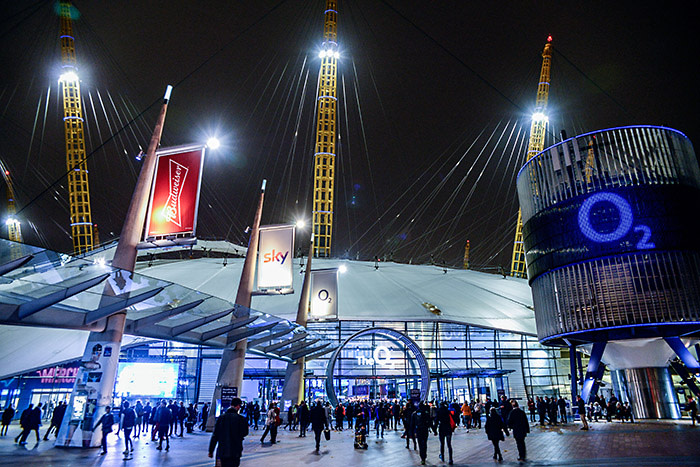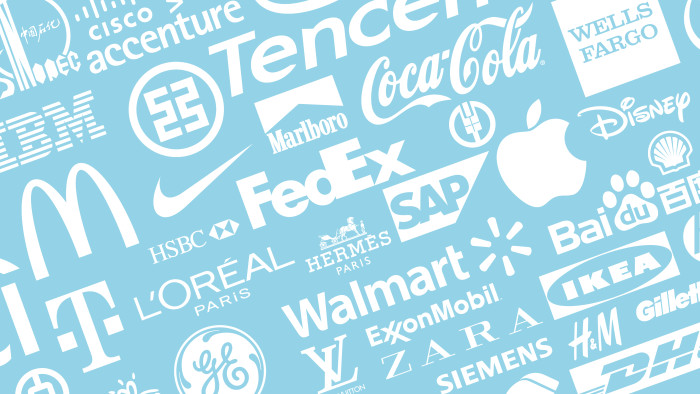Are telecoms companies losing the brand battle?

Roula Khalaf, Editor of the FT, selects her favourite stories in this weekly newsletter.
When Vodafone hired the singers Dua Lipa and Liam Payne to perform last year at an event to launch its Voxi youth network, it was the latest sign of a big telecoms company looking to refresh its brand. Telecoms companies are striving to reconnect with consumers and avoid being seen as mere utilities, even as internet businesses capture an ever-larger share of consumer attention.
Twenty years ago, telecoms companies were the kings of Adland. Whether it was actor Bob Hoskins telling us “it’s good to talk” or Orange’s “the future’s bright” slogan, the sector generated the sort of consumer excitement to justify the billions of dollars needed to build the wireless and broadband networks.
That fed a rise in brand value as the sector’s largest players fought for supremacy. The telecoms market boomed and the branding battle culminated in 2000 when Vodafone signed a then-record breaking £30m deal to emblazon its “comma” logo on Manchester United’s shirts.
Now, however, telecoms brands command less cachet.
O2, for example, was once the gold standard in telecoms rebranding programmes after its transformation from the dowdy BT-owned network Cellnet under the new name propelled it from fourth in the UK market to first within seven years. Yet this month the UK company’s Spanish parent launched O2 in its home market not with a sleek, data-centric image but as a low-cost secondary brand aimed at beating aggressive cut-price rival Masmovil.
The top five brands in the world all stem from the technology sector according to the latest Brand Finance index. Amazon, Apple, Google, Samsung and Facebook were the top of the tree, while telecom companies have fallen. American telecoms powerhouse brands Verizon and AT&T both remained in the top 10 but lost 5 per cent of their value. Vodafone’s brand value fell 14 per cent while familiar names such as BT, Movistar and Deutsche Telekom drifted.
Another survey by WPP/BrandZ showed similar trends. While the overall telecoms sector edged 2 per cent higher due to a strong performance by Orange of France and NTT of Japan, most of the biggest names lost ground.

That led to suggestions that telecoms were losing the brand battle against technology although some argued that the two sectors were more symbiotic.
Jim Prior, the head of WPP’s Superunion, a brand consultancy, says the telecoms sector is in a “what’s next” mode in terms of marketing but still enjoys an “exceptionally strong” brand value in a world of ever rising data volumes. “Telecoms are how you access Facebook. They are not losing a battle. They are an integral part of the ecosystem. A healthy booming technology sector is good for the telcos and vice versa,” he says.
Yet telecoms companies are also aware of the need to freshen up. Both Vodafone and Three have launched sub-brands aimed at reaching new users, notably younger ones, who are not attracted to the main brands. Vodafone’s move to launch Voxi, a SIM-only brand, to under-25s only was aimed at younger users who had no interest in the old “Voice-Data-Phone” brand that was coined in the 1980s.
Dan Lambrou, head of Voxi, said at the launch that the new brand would be run by a younger team more in tune with younger users. “These guys hate stereotypes. You show them a picture of a teenager on a skateboard and they are allergic to it. They will think that has been created by a 50-year-old,” he said.
Yet Voxi has failed to take off with the kids and Vodafone has quickly raised the age limit to 30 to try to make the sub-brand work.
For Vodafone, the Voxi move is part of a wider strategy to breathe new life into its branding strategy as the telecoms market heads toward 5G. Serpil Timuray, group chief commercial operations and strategy officer, explains: “We wanted our brand positioning to reflect our optimism about the future and how technology is enabling humanity to progress.”
She says that Vodafone conducted research covering 32,000 people in 17 countries to tailor its new “glocal approach”. This means that the company taps relevant talent for adverts in each local market — such as Sherlock actor Martin Freeman in the UK and footballer Mo Salah in Egypt — but that these tie into its global strategy.
“Everything ladders back to our global brand positioning: ‘The future is exciting. Ready?’” says Ms Timuray. She adds that new sponsorships of egaming tournaments and a plan to put a network on the moon are campaigns that could have a wider impact around the world.
Meanwhile the convergence between telecoms and media could result in more innovative marketing strategies.
AT&T’s takeover of Time Warner, finally completed in June after two years of intense lobbying, means that the old “Ma Bell” telephone company now makes the popular Game of Thrones television series. The telecoms company even illustrated the completion of the $80bn deal with a photo of the character Daenerys Targaryen sitting atop one of her dragons.
Such tie-ins, combined with the launch of 5G, could well be the answer to “what’s next” for the telecoms companies looking to ensure that consumers do not see them as “dumb pipes” in the future.

Top 100 global brands: 2018
Explore this year’s interactive BrandZ ranking of the world’s 100 most valuable brands, compiled by Kantar Millward Brown, part of the WPP advertising group
Comments